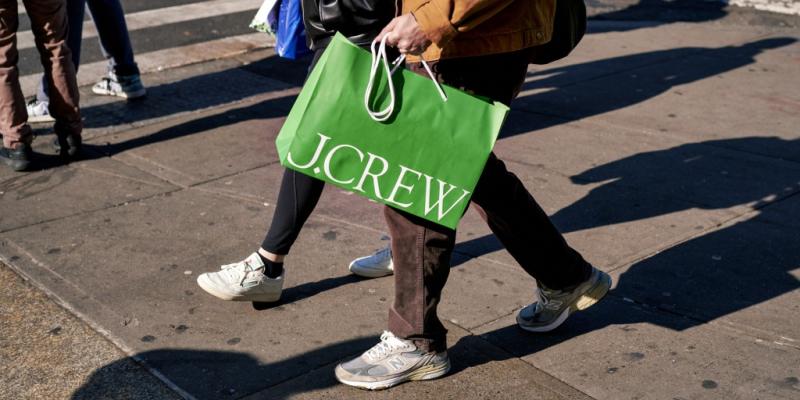People are still refreshing their Covid wardrobes to return to the office
Category: News & Politics
Via: perrie-halpern • 3 months ago • 0 commentsBy: J.J. McCorvey and Alexandra Byrne



Nearly five years since the pandemic hit, many people still haven't finished refreshing their Covid-era closets.
Many did so over the holidays, taking advantage of this season's competitive discounts to buy a few things for themselves alongside gifts for others.
"This was a very solid holiday season for retailers," said Neil Saunders, managing director of the retail consultancy GlobalData. "Consumers dug deep and boosted spending. Retailers also worked hard to secure trade by offering discounts that were slightly more generous than last year."
Clothing, footwear and jewelry posted some of the biggest spending growth, according to recent data from Visa and Mastercard.
Now that they're coming back into the office, they feel like they've lost their complete style identity.
Stylist Avri Lauren
Clothes and accessories jumped 5% this season on Visa's card network. On Mastercard's, apparel spending rose 3.6% — on par with electronics at 3.7% — and even more steeply online, for a 6.7% uptick. Adobe said e-commerce discounts, which peaked above 23% off list prices this holiday season, helped drive online clothing sales nearly 10% above last year's levels, topping out at $45.6 billion.
One reason, industry experts said, is that employers like Amazon and JPMorgan are still ordering staff back to their desks after the pandemic, when many people got used to taking meetings in sweatpants at least a few days a week.
"I definitely have seen a major uptick in my clients that are looking for back-to-the-office outfits," said Avri Lauren, an Illinois-based stylist. She estimated that over a quarter of them ask for her help putting together outfits for work and said the trend has accelerated over the last four months or so.
"Now that they're coming back into the office, they feel like they've lost their complete style identity," Lauren said. She added that her clients are willing to splurge on staples they can wear multiple times a week, and she's seen strong interest in brands that market their products' quality and sustainability such as Everlane and Reformation.
Retail analyst Jane Hali said brands have been adjusting to meet "a surge in need of replacement" of certain garments as customers continue "building their wardrobes, whether it be to go out or go to work." Some have been pushing items that can be worn in multiple settings, she added: "It's not like a typical sweater."
Amazon and JPMorgan were the latest big companies to bang the return-to-office drum in 2025, with the tech giant's five-day mandate taking effect this month and the bank reportedly moving in the same direction, according to Bloomberg. Citigroup, Walmart and UPS have also tightened their in-office requirements over the past year.
But the corporate crackdown has met some resistance, with some workplace trends analysts finding employees popping into their offices for just a few hours — banking a badge swipe but otherwise spending much of their workdays at home.
Even RTO-mandated shoppers who are refreshing their wardrobes may be doing so cautiously, one or two purchases at a time. "Underneath the headline number, the results were somewhat mixed," Saunders cautioned. "Not every retailer found success over the holidays, and we will see some polarized earnings when retailers report next month."
Some major retailers headed into the holidays sounding cautiously optimistic. Gap raised its outlook for the year after touting a strong start to the season. Nordstrom said it saw shoppers snag more clothes and shoes in the third quarter after it added more items under $100.
Many retailers have been careful not to raise prices so high that they lose customers to ultracheap online rivals like Shein and others, opting to absorb much of the impact of supply-chain snarls and other costs — or cutting corners on quality to protect their margins.
Clothing prices have held remarkably steady amid the past few years' inflation roller coaster, rising just 1.1% — and footwear just 0.7% — from November 2023 to November 2024, behind the 2.7% rate for consumer prices overall.
Not every retailer found success over the holidays, and we will see some polarized earnings.
Neil Saunders, managing director, GlobalData
In the meantime, shoppers are embracing new ways of buying clothes, shoes and accessories.
Those purchases remain especially popular on "buy now, pay later" installment loans. Clothing was the top spending category on Afterpay from Nov. 1 to Dec. 31 last year, the service told NBC News. On rival BNPL provider Affirm, fashion and beauty came in at No. 2 for sales volume for the first quarter of fiscal 2025, behind the broad general merchandise segment — with a 15% uptick beating both electronics and travel and ticketing.
Some of these gains simply reflect how prevalent BNPL services have become at checkouts for clothing retailers, especially online. But they're also a sign that consumers are getting more comfortable ordering garments they haven't tried on yet.
"Now there are so many items that you cannot find within the store," Hali pointed out. "A lot of the footwear that was probably on sale [online] at Nordstrom, it doesn't come with a Nordstrom box, it comes from the manufacturer direct to you through Nordstrom," she said.
This range of digital shopping options — both in terms of products and ways to pay for them — is increasingly leading customers to start there first.
"You figure out what you want to buy, and then you figure, is it going to be in store?" Hali said.

Tags
Who is online
41 visitors
